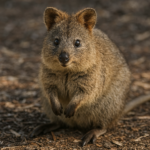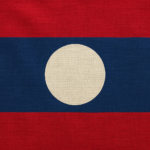
Welcome to our deep dive into the fizzy world of Mountain Dew! This iconic citrus-flavored soda has been a staple in the beverage industry for decades, captivating taste buds and igniting a passionate fan base. Whether you’re a casual drinker or a die-hard devotee, you might be surprised by the intriguing history, unique flavors, and cultural impact of Mountain Dew. From its humble beginnings to its status as a beloved energy booster, we’ve compiled 25 fascinating facts that will quench your thirst for knowledge. So grab a can, sit back, and let’s explore the effervescent journey of Mountain Dew!
Mountain Dew’s Beginnings: Mountain Dew was originally created in the 1940s by Barney and Ally Hartman, two beverage bottlers from Tennessee. They formulated it as a mixer for whiskey, aiming to create a drink that would complement the flavor of the spirit. The initial formulation was somewhat basic and was intended for local distribution, primarily appealing to the Southern market where whiskey was popular. Over the years, the brand evolved significantly, but its roots in the beverage industry began with this simple mixer.
The Name’s Inspiration: The name “Mountain Dew” is derived from a slang term for homemade moonshine, particularly in the Appalachian region. The creators chose this name to resonate with their target audience, who were familiar with the culture of moonshining and the mountainous landscapes of the South. This clever branding not only reflected the drink’s origins but also helped establish a connection with consumers who valued authenticity and local traditions.
First Formula: The original formula of Mountain Dew was a lemon-lime soda, which is quite different from the citrus blend that consumers recognize today. This early version was more akin to a standard soda of the time, lacking the distinctive flavor profile that later iterations would develop. It wasn’t until the brand was acquired by PepsiCo and underwent significant reformulation that the iconic citrus flavor emerged, setting the stage for its popularity in the soft drink market.
PepsiCo Acquisition: In 1964, PepsiCo acquired Mountain Dew, a strategic move that allowed the brand to expand its reach significantly. This acquisition marked a pivotal moment in Mountain Dew’s history, as PepsiCo invested in marketing and distribution, helping to elevate Mountain Dew from a regional product to a national sensation. The backing of a major beverage corporation enabled Mountain Dew to tap into new markets and demographics, ultimately becoming a household name across the United States.
Code Red Introduction: In 2001, Mountain Dew introduced its first flavor extension, Code Red, which is a cherry-flavored variant of the original drink. This release marked a significant shift in the brand’s strategy, as it began to explore flavor diversification to attract a broader audience. Code Red quickly gained popularity, paving the way for a series of other flavor innovations and limited editions, which have since become a hallmark of the brand’s identity.
Baja Blast Craze: Baja Blast, a tropical lime flavor, was initially introduced as an exclusive offering at Taco Bell locations in 2004. The flavor’s unique profile and refreshing taste quickly garnered a loyal following, leading to its demand beyond the fast-food chain. Due to its popularity, Mountain Dew began to release Baja Blast in limited retail quantities, creating a frenzy among fans who sought to enjoy this distinctive flavor outside of Taco Bell, further solidifying its place in pop culture.
Limited Editions: Mountain Dew frequently releases limited edition flavors, often tied to promotions or events, which keeps the brand dynamic and engaging for its consumers. These unique flavors can create excitement and anticipation among fans, as they eagerly await the next seasonal or promotional offering. By continuously innovating and introducing new tastes, Mountain Dew maintains its relevance in a competitive soft drink market, appealing to adventurous consumers who enjoy trying new products.
Dewmocracy Campaign: In 2007, Mountain Dew launched the Dewmocracy campaign, an interactive initiative that allowed fans to vote on new flavors. This campaign not only engaged consumers but also made them feel like active participants in the brand’s development. By incorporating consumer feedback into the flavor creation process, Mountain Dew fostered a sense of community and loyalty among its fans, showcasing the brand’s commitment to listening to its audience and adapting to their preferences.
Extreme Sports Sponsorships: Mountain Dew has long been associated with extreme sports, sponsoring events like the X Games and partnering with athletes in disciplines such as skateboarding, snowboarding, and BMX. This association aligns with the brand’s image of energy and adventure, appealing to a younger demographic that values action sports and adrenaline-fueled experiences. By positioning itself within the extreme sports culture, Mountain Dew has cultivated a strong brand identity that resonates with its target audience.
Green Label Initiative: The Green Label initiative was launched by Mountain Dew to support emerging artists and musicians, further cementing the brand’s connection to youth culture and creativity. Through this program, Mountain Dew has provided a platform for new talent to showcase their work, whether in music, art, or other creative endeavors. This initiative not only promotes artistic expression but also aligns the brand with a lifestyle that values innovation and originality, appealing to consumers who appreciate creativity.
Caffeine Content: Mountain Dew contains more caffeine than most other sodas, making it a popular choice for consumers seeking an energy boost. With approximately 54 mg of caffeine per 12 oz serving, Mountain Dew provides a higher caffeine content compared to many other soft drinks, which typically contain around 30-40 mg. This characteristic has contributed to its popularity among individuals looking for an extra kick of energy, particularly among younger consumers and those engaged in active lifestyles. The caffeine content has also led to discussions about its effects on health, particularly in relation to consumption habits among teenagers and young adults.
High Fructose Corn Syrup: Like many sodas, Mountain Dew contains high fructose corn syrup (HFCS) as a sweetener, which has been a topic of health discussions over the years. HFCS is often criticized for its association with obesity and other health issues, leading to a growing consumer interest in alternative sweeteners and healthier beverage options. The presence of HFCS in Mountain Dew has sparked debates about the nutritional implications of soft drink consumption, prompting some consumers to seek out drinks with natural sweeteners or lower sugar content.
Yellow 5 Controversy: The vibrant color of Mountain Dew comes from Yellow 5, a food dye that has sparked debates about its safety and potential side effects. Some studies have suggested a possible link between Yellow 5 and hyperactivity in children, leading to calls for greater regulation of artificial coloring in foods and beverages. While the FDA has deemed Yellow 5 safe for consumption, concerns persist among health-conscious consumers, prompting some to avoid products containing artificial dyes in favor of more natural alternatives.
Video Game Tie-Ins: Mountain Dew has partnered with popular video game franchises, such as Call of Duty, to offer in-game rewards and promotions to gamers. This marketing strategy effectively taps into the gaming culture, appealing to a demographic that values gaming and digital experiences. By aligning itself with the gaming community, Mountain Dew not only enhances its brand visibility but also creates a unique connection with consumers who enjoy both gaming and soft drinks, fostering brand loyalty among this audience.
Dewshine: In 2015, Mountain Dew released Dewshine, a clear version of the drink inspired by its moonshine roots. Marketed as a craft soda made with real sugar, Dewshine aimed to capture the essence of the original Mountain Dew while appealing to consumers looking for a more authentic beverage experience. This product was positioned as a nod to the brand’s heritage, celebrating its origins while also catering to the growing trend of craft beverages that emphasize quality ingredients and unique flavors.
Mountain Dew Mouth: The term “Mountain Dew Mouth” refers to severe tooth decay linked to excessive consumption of sugary sodas, particularly in rural areas. This phenomenon has been highlighted in discussions about dental health, especially among children and adolescents who may consume large quantities of sugary beverages. The term underscores the potential health risks associated with high soda consumption and has prompted public health campaigns aimed at promoting better dietary choices and increasing awareness of the impact of sugary drinks on oral health.
Mountain Dew Energy: In the UK, Mountain Dew is marketed as an energy drink, featuring a slightly different formula to comply with local regulations. This adaptation allows the brand to cater to the energy drink market, which has seen significant growth in recent years. By positioning itself as an energy drink in certain regions, Mountain Dew taps into a consumer base that seeks functional beverages designed to provide an energy boost, further expanding its product offerings and market reach.
Different Flavors Abroad: International markets often feature exclusive flavors of Mountain Dew that are not available in the United States, such as Mountain Dew Pitch Black in Malaysia. These regional variations reflect local tastes and preferences, allowing Mountain Dew to cater to diverse consumer bases around the world. By introducing unique flavors tailored to specific markets, the brand enhances its global appeal and encourages exploration among consumers who may be curious about trying different tastes.
Name Changes: In some countries, Mountain Dew is sold under different names. For example, in Australia, it’s known simply as “Dew.” These name changes often occur due to branding strategies aimed at better resonating with local markets or avoiding potential trademark issues. Such adaptations highlight the brand’s flexibility in navigating international markets while maintaining its core identity and flavor profile, ensuring that it remains recognizable to consumers regardless of the name used.
Mountain Dew Slurpee: 7-Eleven once offered a Mountain Dew-flavored Slurpee, combining two beloved beverages into one icy treat. This collaboration allowed fans of both Mountain Dew and Slurpees to enjoy a refreshing, slushy version of the soda, appealing to consumers looking for a cool beverage option, especially during hot weather. This innovative product exemplifies how brands can creatively merge popular items to attract attention and create excitement among consumers.
Mountain Dew Ice Cream: Some adventurous fans have taken the initiative to create homemade Mountain Dew ice cream, a unique dessert that combines the iconic citrus-flavored soda with cream. This innovative treat involves blending Mountain Dew with heavy cream and sugar, then freezing the mixture to achieve a creamy, refreshing dessert. The vibrant green color and distinct flavor profile of Mountain Dew make it an intriguing choice for ice cream lovers looking to experiment with flavors. This creative concoction showcases the versatility of the beverage beyond just being a soda, appealing to those who enjoy culinary experimentation.
Dewritos: In 2014, the concept of “Dewritos,” a Mountain Dew-flavored Doritos chip, captured the imagination of fans and snack enthusiasts alike. Although the flavor never officially made it to the shelves, the idea sparked excitement and curiosity among consumers. The combination of the bold, citrusy flavor of Mountain Dew with the crunch of Doritos seemed like a perfect match for those who enjoy unique and adventurous snack experiences. The buzz surrounding Dewritos highlighted the cultural impact of Mountain Dew and its strong following, showcasing how brands can inspire creativity and innovation in food pairings.
Largest Mountain Dew Bottle: In 2013, a remarkable feat was achieved in Las Vegas when a 20-foot-tall Mountain Dew bottle was constructed, setting the record for the largest soda bottle ever made. This impressive structure not only served as a promotional item for the brand but also drew significant attention from both fans and tourists. The giant bottle was an eye-catching display, symbolizing the brand’s popularity and its playful approach to marketing. Such large-scale creations often become local landmarks and contribute to the brand’s visibility and cultural presence in popular events and gatherings.
Mountain Dew World Record: The word “DEW” was created using a remarkable total of 4,715 paintballs, setting a record for the largest paintball word ever made. This impressive feat showcases the creativity and enthusiasm of paintball enthusiasts who sought to combine their love for the sport with a fun and artistic expression. The event likely involved meticulous planning and coordination, as participants would need to arrange the paintballs in a way that clearly formed the letters of the word while ensuring that the overall design was visually striking. Each paintball, filled with vibrant colors, contributed to the final display, creating a colorful and eye-catching representation of the brand. This record not only highlights the playful side of paintball culture but also emphasizes the community spirit among participants, as they came together to achieve a common goal. Such records often attract media attention, further enhancing the visibility of both the event and the brand associated with it, in this case, Mountain Dew.
Recyclable Packaging: Mountain Dew has made a commitment to using recyclable packaging materials as part of its efforts to reduce its environmental footprint. This initiative reflects a growing awareness among consumers and brands about the importance of sustainability and responsible consumption. By opting for recyclable materials, Mountain Dew aims to contribute to waste reduction and promote recycling practices among its consumers. This commitment not only aligns with consumer expectations for environmentally friendly practices but also demonstrates the brand’s willingness to adapt to changing market demands and contribute positively to environmental efforts.
FAQs about Mountain Dew:
1. What is Mountain Dew?
Mountain Dew is a carbonated soft drink known for its distinctive citrus flavor. Originally created in the 1940s as a mixer for whiskey, it has evolved into a popular standalone beverage. The brand is recognized for its vibrant green color and high caffeine content compared to other soft drinks.
2. Who invented Mountain Dew?
Mountain Dew was originally developed by Barney and Ally Hartman, two beverage bottlers in Tennessee, in the 1940s. The formula was later revised by Bill Jones, who added more citrus flavor and marketed it more widely. The brand was eventually acquired by Pepsi-Cola in 1961, which helped propel its popularity.
3. What are the different flavors of Mountain Dew?
Mountain Dew has released numerous flavors over the years, including:
- Original Mountain Dew: The classic citrus flavor.
- Diet Mountain Dew: A calorie-free version of the original.
- Code Red: A cherry-flavored variant.
- Voltage: A raspberry-citrus flavor with ginseng.
- Live Wire: An orange-flavored version.
- Baja Blast: A tropical lime flavor, originally exclusive to Taco Bell.
- Mountain Dew Zero Sugar: A no-calorie alternative with a similar taste to the original.
4. Does Mountain Dew contain caffeine?
Yes, Mountain Dew does contain caffeine. The original Mountain Dew has about 54 mg of caffeine per 12 oz serving, which is higher than many other sodas but lower than most energy drinks. The caffeine content can vary slightly among different flavors.
5. Is Mountain Dew vegan?
Mountain Dew is generally considered vegan as it does not contain any animal-derived ingredients. However, it’s always best to check the specific product label, as formulations can change and may vary by region.
6. What is the nutritional information for Mountain Dew?
The nutritional information can vary between flavors, but a standard 12 oz serving of original Mountain Dew typically contains:
- Calories: 170
- Total Fat: 0g
- Sodium: 60mg
- Total Carbohydrates: 46g
- Sugars: 46g
- Protein: 0g
For specific dietary needs, it’s advisable to check the product label for the most accurate information.
7. Can Mountain Dew be used in recipes?
Yes, Mountain Dew can be used in various recipes, particularly in desserts and marinades. It can add a citrus flavor to cakes, cupcakes, and even barbecue sauces. There are numerous creative recipes available online that incorporate Mountain Dew in fun and innovative ways.
8. What is the “Mountain Dew Challenge”?
The “Mountain Dew Challenge” is often associated with various social media trends, where participants challenge themselves (or others) to drink a large amount of Mountain Dew in a short time or to create unique recipes using the beverage. Always approach such challenges with caution and moderation.
9. Where can I buy Mountain Dew?
Mountain Dew is widely available in grocery stores, convenience stores, and online retailers. You can find it in various sizes, including cans, bottles, and multi-packs. Availability may vary depending on your location and the specific flavors you are looking for.
10. Is Mountain Dew bad for you?
Like many sugary soft drinks, excessive consumption of Mountain Dew can lead to health issues such as weight gain, dental problems, and increased risk of chronic diseases. Moderation is key, and it’s important to balance your diet with healthier beverage options.








